Monday
Mandala ProjectsShambhala Online: From Humble Beginnings
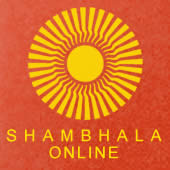 A Conversation Between Shambhala Times Editor Sarah Lipton, Shambhala Online Research Director Acharya Eve Rosenthal, and Shambhala Online Director Heather Scott
A Conversation Between Shambhala Times Editor Sarah Lipton, Shambhala Online Research Director Acharya Eve Rosenthal, and Shambhala Online Director Heather Scott
Regarding the Past, Present and Future of Shambhala Online
Sarah: Could you tell us a little bit about the inspiration behind Shambhala Online? How did it begin and evolve?
Acharya Rosenthal: The first thought was that we should be screaming the message of Shambhala from the rooftops. Shambhala Online evolved as a way of presenting the dharma far and wide.
Shambhala Online grew out of my initial interest in multipoint, synchronous technology, and what impact it could have on this community. I was interested in its potential for bringing people from different locales together as full participants in real time.
This was the beginning of Shambhala Online.
Later, there was an event at Karme Choling at which Sakyong Mipham Rinpoche addressed a Warrior Assembly and Sutrayana Seminary at Shambhala Mountain Center. The Sakyong was very excited! What a marvelous way for him to connect with the people, and for them to connect with him from afar.
The name “Shambhala Online” arose at an acharya retreat, at dinner with the Sakyong. I said, “Shambhala Online,” the Sakyong smiled, and so it was named.
Heather: In the early days, Eve and I would crawl around on the floor plugging in cables, adjusting lights, hanging backdrops and checking microphones. This was an important testing period for working with the technology, fine-tuning it to suit our needs.
In our first year, I moderated every online program we offered, including some that I was not eligible to attend! Before the program began I would prepare as best as I could and then turn off my audio. I would keep an eye out for signs of trouble and check the audio once in a while to make sure it was still on. As we added more and more programs, I started inviting others to help out by training as moderators. Today, there are five volunteer moderators on our team. And we absolutely could not manage without them! (Read more about our moderators on our Shambhala Online blog – click here.)As the activity of managing our “virtual center” continues to increase, and since the number of programs we offer in real-time is growing, we have needed to add more bodies to the administrative team. Barbara Zielinski is our amazing registrar and newly hired Laura Greer serves as Head Moderator.
We eventually recruited others to help. We established broadcast sites at Karme Choling, Boulder, Halifax and Cologne, where a teacher could simply walk in, take his or her seat, smile for the camera and start to teach.
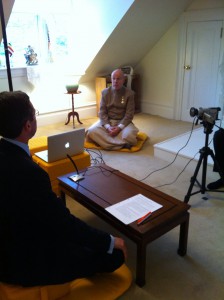
Online broadcast conversation with Director of Shambhala Europe Christoph Schoennher and President Richard Reoch
Success
Sarah: Shambhala Online has been quite successful. In recent travels abroad, I heard from people about their experiences with attending a live talk. Can you tell us more about that?
Acharya Rosenthal: Shambhala Online has become a lifeline for students around the world, in particular small groups and those in remote locations. It’s been very rewarding for me to help this come to be. People now depend on this resource; it has broken down boundaries.
I taught Fearlessness in Everyday Life online to students from Europe, South America, the east coast and west coast, including a quad – a four-person discussion group with video. And I thought, “This is cool, this is really cool.”
On Shambhala Day it is very moving to see everyone connecting at one time, around the world. Yes, it is still a little awkward but we’re working on it. Time zones are always a challenge. During the Lineage festival people were participating online at midnight.
Heather: Eve taught a weekend course from Halifax to a group gathered in Cape Town, South Africa. She gave three or four talks, meditation instruction and held discussions. The container created in Cape Town by Jennifer Woodhull, Johann Verster and other meditation instructors enabled this to work really well.Shambhala Online hosted Meditation in Everyday Life for the Taipei Shambhala Meditation Group and two students in Asia, all in their native language. Holly Gayley and Yeachin Tsai teamed up to simultaneously teach and translate from, respectively, Boulder and New York.
Online Ease, Online Issues
Sarah: Is it the case that it’s getting easier for people to use this technology? Or are there still issues to iron out? It seems like a complicated way to present the teachings.
Acharya Rosenthal: People can now receive the dharma at home. How tempting it might be to wear bunny slippers and eat ice cream while doing so! We have to educate everyone in how to receive these teachings, whether live or on video. In conjunction with the Office of Practice and Study, we have established guidelines for participation, and Heather is working with centers and individuals on this. As the Sakyong says, “Don’t watch this in a bathtub with a remote!”A challenging situation for teachers is speaking in person and online at the same time. This isn’t comfortable for every teacher, and each must decide for him or herself what works best. The Sakyong is particularly good at teaching in this way; it allows him to reach out and this is what he wants.
Heather: It’s not just students who enjoy ease of access. The technology also allows teachers to broadcast from the comfort of their own homes or offices, with remote support from us. This is often the most convenient way for busy acharyas and shastris to connect with students around the world. In our first year, Acharya Michael Greenleaf went online to give refuge to a dying woman in California, at her request. This is just one example of the many ways this technology can be used by teachers.
Community Service
Acharya Rosenthal: Today we have an automated registration process, allowing students to go right into a program instead of waiting. All course materials, recording links and PDFs are right there. It’s a learning management system. We offer core path programs to centers and groups who do not have many teachers, and to individuals who do not live near a center.
The recording library is an integral part of this. All the teachings are available to practitioners. That’s really incredible. Plus we pay the teachers royalties, which is a first for us.
I’m really thrilled with how it’s evolved. I am very proud of how we function as a virtual center. We are in the black. We provide services to the whole mandala, with a largely volunteer staff and a lot of cooperation. We’re actually ahead of the curve. It’s harder than it looks to do the multipoint interaction. But we’re doing it!As Research Director, I am continually researching new ways to communicate and expand our use of this medium. During the recent sangha retreat in Halifax we used a new platform to bring hundreds of groups and individuals together from around the world. Not only did we broadcast the talks, we also broadcast the meditation to help hold the container. Recordings were made available immediately.
Heather: Many groups in the mandala use Shambhala Online for meetings and trainings, including the Kalapa Council, Mandala Council, and Dorje Kasung, to name just a few. Many people have been trained to manage these meetings, although we will always lend a hand if necessary.
Acharya Rosenthal: A few years ago the Sakyong gave a last-minute address from New York City on Parinirvana Day and it all came together immediately. We had four days notice, yet we were able to broadcast to the sangha. We can broadcast from wherever he is; we’re good to go with that, which is great!
And, the Future
Sarah: Now that you have all of this developed, how are you looking towards the future?
Acharya Rosenthal: Right now the multipoint online broadcast is more of an in-house thing; it’s not being used for the general public, so it’s not usually people’s first step in Shambhala. But someday it could be.We’re also working on offering regional-specific programs, such as bringing all west coast folks together to receive teachings. I’ve been talking to Acharya Alfonzo Taboada about his interest in working with the Spanish-speaking sangha in this way as well.
Heather: Acharya Tabaoda and I recently met online for a tour of our virtual classroom. He was really inspired and we have just scheduled our first Spanish-language MIEL course this May! This will enable people to attend online programs in their own language and in their own time zone.
Acharya Rosenthal: The other thing we’re noticing is that sometimes it works better for students to go online after the program and use the recordings. We’re looking at the trend and seeing how to use it. As the internet and technologies for streaming video are constantly changing and improving, we are now actively researching new technologies to improve the quality of the broadcasts for large events. We are also exploring new ideas for integrating social media with Shambhala online.
Closing the Circle: From Humble Beginnings
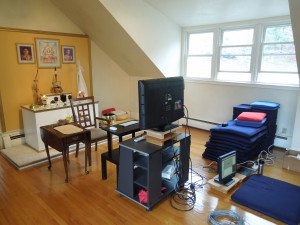 Sarah: In closing, I wonder if there is an image you can leave us with that illustrates the pith of what Shambhala Online offers?
Sarah: In closing, I wonder if there is an image you can leave us with that illustrates the pith of what Shambhala Online offers?
Acharya Rosenthal: Thinking back to that early teaching in Philadelphia, it all came down to that bow. The participants were isolated, yet they realized they were part of something bigger. Through Shambhala Online each person becomes part of something much bigger, something that spans the globe. Shambhala Online has broadened everyone’s awareness. I am confident it will continue to improve. It’s amazing.
Sarah: Thank you very much, Acharya Rosenthal and Heather! May Shambhala Online continue to grow and flourish, bringing the dharma to all!
~~
For more information about Shambhala Online, and to see how you can get started using this rich resource, visit: www.shambhalaonline.org
~~
Thanks to volunteer editors Allison Rabinowitz and Leslie Witt for working on drafts of this article.

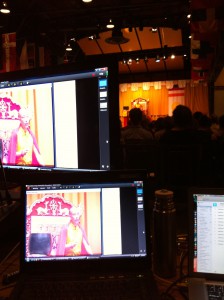
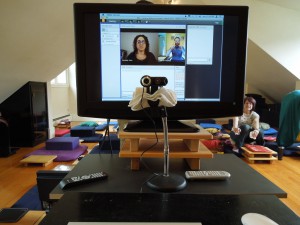
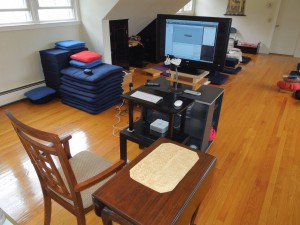
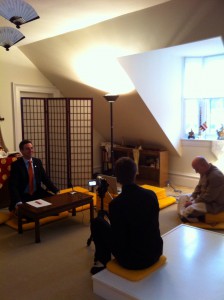
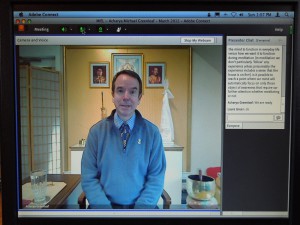
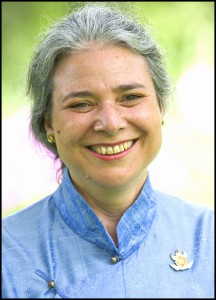
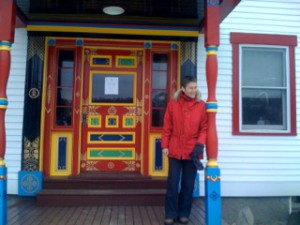




May 4, 2012
Reply
Yes, please don’t forget those of us who can’t watch shambhala online at the specific time! I love Shambhala Online. You forgot to mention it is also a way for people who do not have physical accessibility to their center to hear talks. Thank you
May 3, 2012
Reply
Great article Sarah, Eve and Heather! I’m proud to be a part of Shambhala Online and the opportunity to work with such amazing women! I also want to express my appreciation for our amazing volunteer moderators.